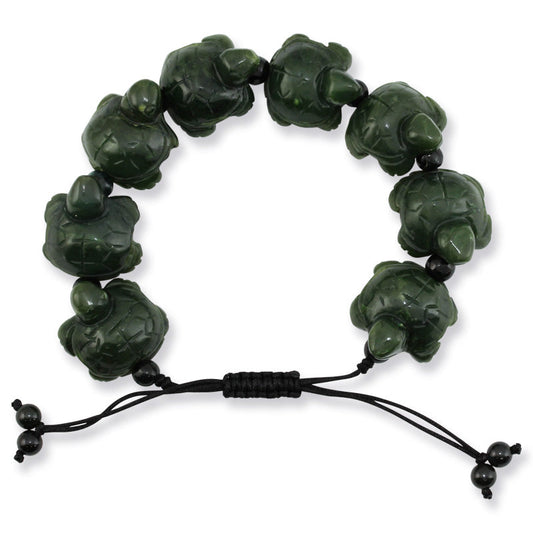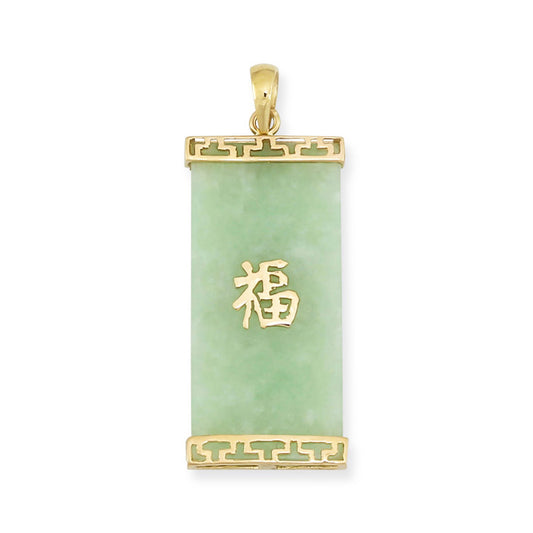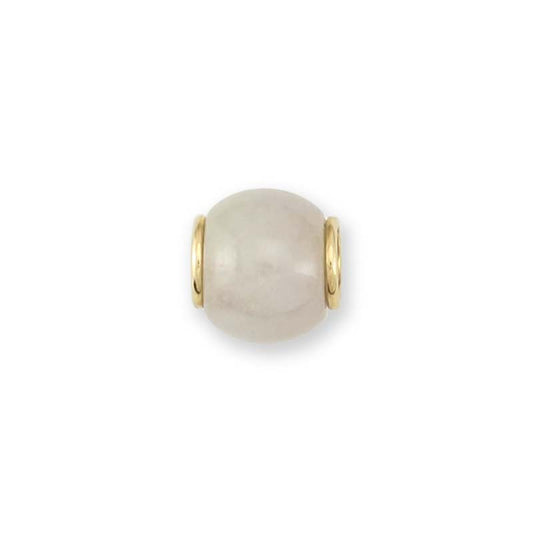Jadeite jade and nephrite jade are two of the toughest gemstones in the world. Medium to high qualities of both jades are harder to break than diamonds, and both jades are suitable for everyday wear except in the cases of fractured jade or non-gem quality jade.
|
Note: ‘B Jade,’ ‘C Jade,’ and ‘B+C Jade,’ as well as other treated jades including jade doublets, are not suitable for everyday wear. Treated jades are much more brittle and less stable than natural jade. Make sure that the jadeite jade you buy is natural and untreated! At Mason-Kay, we test every piece and guarantee that it’s natural and untreated. |
Caring for your jade is simple, but very important, so in this blog article, we will discuss jade care categorically for your convenience.
(Left) Treated jadeite jade, B Jade, that has been acid-bleached and impregnated with polymer. (Right) Natural 'A Jade' jadeite jade from Mason-Kay.
Taking off your jade
Remove your jade bangle, jade ring, jade pendant or jade earrings over your bed or another soft surface. If removing your jade over the sink, lay a towel down to protect the stone from the hard ceramic in case it falls.
Natural Guatemalan blue-green jadeite jade from Mason-Kay jade.
How to Clean Jade Stone
Don’t put your jade in the ultrasonic or under a jewelry steamer. Instead, wipe it with a soft cloth and rinse it in water. You can even scrub your jade with a soft baby toothbrush and a mixture of Dawn soap and water.
(Left) Natural Guatemalan blue-green jadeite jade, aka blue jade, from Mason-Kay Jade. (Center) Black nephrite jade "gypsy" style ring from Mason-Kay Jade. (Right) Natural green jadeite jade bead bracelet from Mason-Kay Jade.
Storing your jade
Jade loves LOVE! Jade is meant to be worn. The best thing you can do for your jade is to wear it and touch it. Jade is an aggregate, meaning a rock, and some qualities of jade can be porous, meaning they’ll absorb the oils and chemicals they come in contact with. To prevent your jade from absorbing unwanted chemicals, rub your jade so that your skin oil will bind to the stone and protect it.
When you’re not wearing your jade, keep it separate from other gemstones in your jewelry storage by packaging it in a jewelry pouch or soft cloth.
Natural green jadeite jade bangles from Mason-Kay Jade.
What to do if your jade bangle breaks
Natural jadeite jade bangles of medium-to-high quality will not break easily, but it can happen as a result of falling on concrete, weightlifting, or any other repeated trauma to the stone.
If your natural jadeite jade bangle breaks, it’s possible to be repaired with a gold sleeve or a gold “hinge-and-clasp.” Talk to your local, independent jewelry store or email kris@masonkay.com for more information.
Daily wear
While jadeite jade is tougher than diamond, it’s not harder than diamond.
In gemology, Toughness is resistance to breaking whereas hardness is resistance to scratching.
Jadeite jade is usually harder than steel, but is sometimes softer than quartz. Quartz dust can be in dirt or soil, so take care to remove your jade jewelry before gardening.
It’s also not advised to wear jade jewelry in the shower, pool or hot tub – or while wrestling bears.









